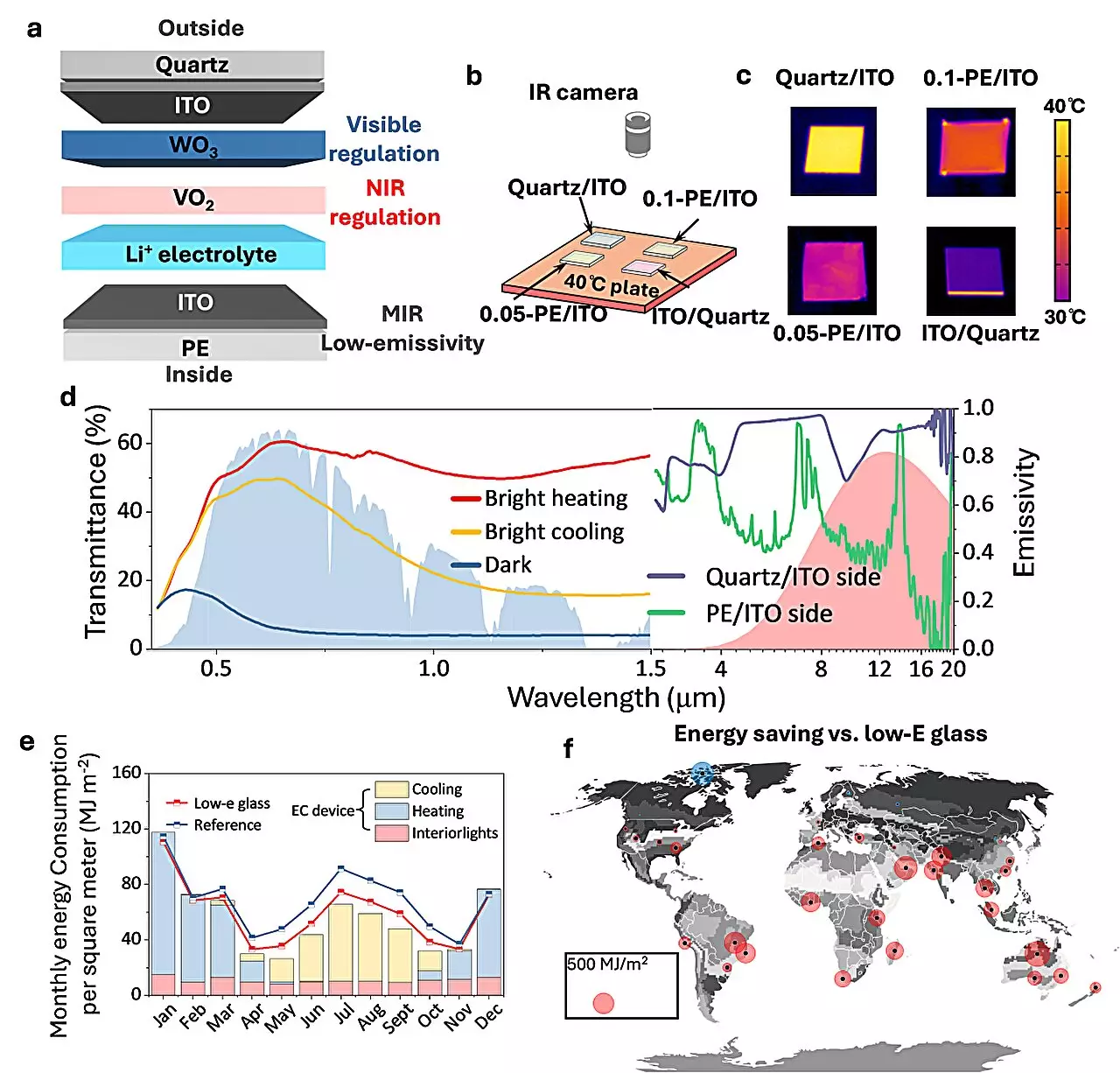Energy consumption in buildings has long been a concern, with the need to reduce carbon footprints and increase energy efficiency becoming more pressing. One area of innovation that has shown great promise is electrochromic smart windows. These windows have the ability to dynamically regulate solar radiation, offering a potential solution to decreasing the energy consumption of buildings.
While electrochromic windows have made significant strides in improving response speed and contrast ratio, they have struggled with the impact of solar radiation and outdoor temperature. These factors have limited the overall effectiveness of these windows in achieving optimal energy savings.
In a recent study published in Nature Sustainability, a research team led by Prof. Cao Xun has introduced a groundbreaking new type of electrochromic structure for energy-saving windows. This new design is based on a VO2-WO3 tandem film with a solid electrolyte, which allows for the tri-stable control of solar heat and sunlight transmittance simultaneously.
One of the key advantages of this new electrochromic smart window system is its ability to independently regulate the near-infrared (NIR) and visible transmittance of sunlight. By allowing Li+ to diffuse along the depth of VO2 and WO3, this structure can effectively minimize the total energy cost of indoor lighting and heat exchange. Additionally, the decoupling of the barrier for maintaining the state in VO2 from the barrier for changing the state in WO3 results in non-volatility, providing a more efficient energy-saving solution.
Simulations have shown that this new electrochromic window design exhibits higher heating and cooling energy savings than commercial low-E glass in a wide range of climates worldwide. Outdoor experiments conducted in Sanya, Hainan Province, and Shanghai have demonstrated the ability of these windows to achieve continuous cooling of up to 2°C–14°C throughout the day on a clear sunny day.
The development of this new electrochromic smart window system represents a significant advancement in the field of energy-saving technology. By addressing the limitations of current electrochromic windows and offering impressive energy savings, these windows have the potential to revolutionize energy consumption in buildings and pave the way for a more sustainable future.


Leave a Reply